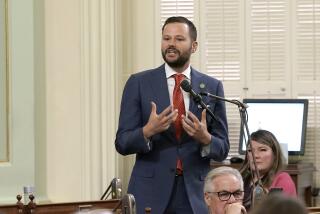Maternity leave in America: How do we stack up?
When I was waddling through the L.A. Times newsroom last fall very pregnant, the issue that weighed most on me had little to do with my actual baby bump. It was whether I could afford to take all the time I needed to bond with and care for my daughter in her very early development and still support my family financially.
When it comes to maternity leave, the U.S. is by no means a leader.
That blessed time off from work when parents learn and stumble through all of those unbelievably unnatural “natural instincts” varies greatly from country to country. Canadians can get up to 50 weeks of leave at up to 45% of pay. The Danes and Serbs can take 52 weeks at full pay. The Swedes offer the most paid time off, 60 weeks at 80% of pay. (More in the infographic below.)
Meanwhile, in the United States, there is no formal national leave policy.
The U.S. is the last member among the 34-country Organization for Economic Cooperation and Development that does not mandate some sort of maternity or paternity leave.
Human Rights Watch in a 2011 report expounded on the negative impact of the lack of paid leave: Among other problems, the group said “scarce or no paid leave contributed to delaying babies’ immunizations, postpartum depression and other health problems, and caused mothers to give up breastfeeding early.”
But last month, a bill was introduced in Congress that would create national family and medical leave insurance so that workers could take up to 12 weeks of paid leave a year for serious health conditions and caregiving to family members, including newborns.
Here in California, we already have access to 12 weeks of job-protected leave, six of them paid at a percentage of our normal pay.
California’s approach helped boost the likelihood that mothers here return to work within nine months to a year after giving birth, according to research by University of Virginia’s Christopher J. Ruhm and Middle Tennessee State University’s Charles L. Baum.
Personally, I was able to cobble together the four months’ leave by combining company leave, state disability, FMLA and California’s bonding leave. As the primary breadwinner right now, I found that being able to focus exclusively on my family for those four months enabled me to focus more sharply on work when I returned last week.
What has your experience with family leave been? Tell us in the comments below.
On Twitter: @mmaltaisLAT
 Explore more infographics like this one on the web’s largest information design community - Visually.
Explore more infographics like this one on the web’s largest information design community - Visually.
More to Read
Start your day right
Sign up for Essential California for news, features and recommendations from the L.A. Times and beyond in your inbox six days a week.
You may occasionally receive promotional content from the Los Angeles Times.







